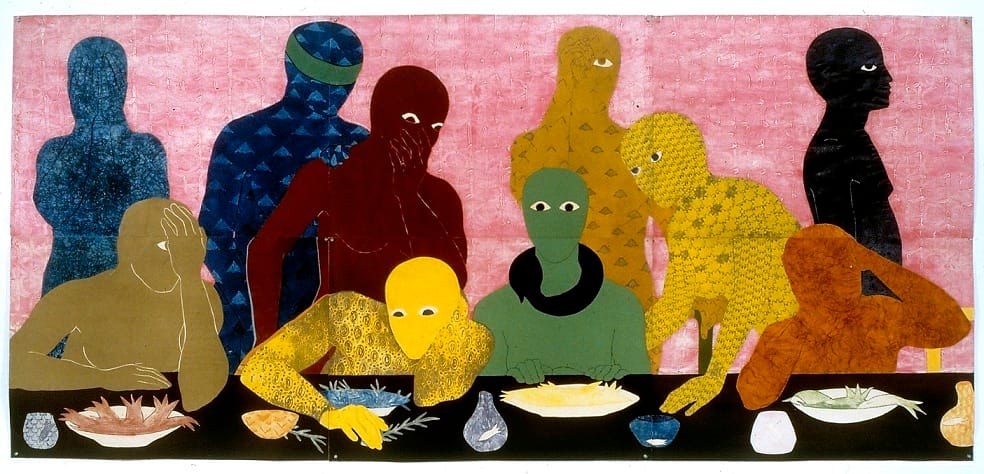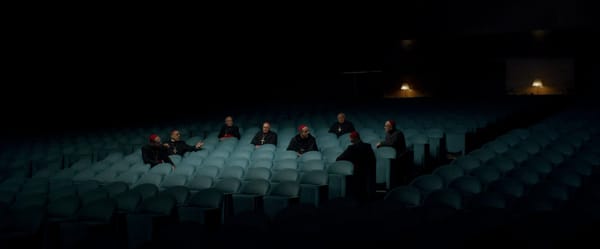Maybe modern art does make sense
Remedying misperceptions of modern and contemporary art

We’re expected to be impressed by the masterpieces that adorn walls of museums like the Louvre simply because we’re told they’re masterpieces. But how do we find value in art that doesn’t enjoy the same benefits of having that longevity on its side?
I’ve spent hours in museums and galleries, hoping that through deliberate exposure, I might bring myself into some sort of epiphanic state to cultivate an identity as an art connoisseur. In London, I’ve seen works from the Bloomsbury Group at the National Portrait Gallery and world-famous names like Monet and Van Gogh at the National Gallery. In Madrid, I walked through galleries of some of the most important artworks in the world: Picasso’s Guernica, Velázquez’s Las Meninas, and (my personal favourite) Bosch’s The Garden of Earthly Delights.
While these were undoubtedly mesmerising experiences, I still felt that I was missing an emotional spark that should’ve moved me to hover just a while longer at a specific piece. It wasn’t until an impromptu trip to London’s Tate Modern that I found what I was missing.

I’ll sheepishly admit that I’ve often held those close-minded reactions so commonly associated with modern and contemporary art: “How is this even art?” and “I could even paint that!”. Although fostering a relationship with art is a lifelong endeavour, there was something about Tate Modern that brought me one synaptic link closer to that epiphany I’d been after.
Tate Modern was established in 2000 and is home to the UK’s national collection of international modern and contemporary art. We may be used to using the words “modern” and “contemporary” interchangeably in day-to-day conversation. In the context of art, however, those words have distinctive meanings relating to artistic periods.
Modern art refers to works created between the 1860s and late 1960s. It includes movements like Impressionism, Cubism, and Surrealism — think Picasso and Dalí. Contemporary art is, on the other hand, “art of the moment”. It refers to work from the 1960s up to the present day. This is when we begin to see the birth of performance and installation works, digital art, and experimentation with interdisciplinarity and hybridity.
Tate Modern is, not unlike most museums, a maze of gallery rooms — each one interconnected with the next and inexplicably bringing you back around to where you began. The museum is admirably aware of the fact that it’s host to a huge general public who, like me, might harbour misperceptions about the art on display in their collections. The galleries are curated around recognisable themes like mass media and technology, race and gender, politics and conflict. The pieces are blurbed in ways that provide enough contextual background to describe what’s on display all the while holding space for interpretation, which allows viewers to bring our own perspectives into the experience.
Here, for instance, is an installation piece called Babel (2001) by Cildo Meireles, which is the perfect example of how Tate Modern shifted my relationship with visual art and the appreciation of it:
In letting go of the belief that a good knowledge of art should start with the century-old masters, their techniques, and works, my mind opened to pieces that had immediate relevance to my own life.
Instead of straining to find meaning in European landscapes and portraits of white nobility, I could stand in a room with this overpowering tower of radios blaring an incongruence of broadcasts and instantly grasp its message about information overload and incomprehension. Because in our lives filled with kilometres worth of words, videos, and photos to scroll through on handheld devices, who wouldn’t resonate with that feeling of overstimulation?
Tate Modern’s housing of nearly seventy thousand artworks means that it’s inevitable to run into pieces that still might raise those bewildered thoughts: “How is this art?” and “I could make that”. But it is, in my humble and insignificant opinion, that divergence between us as viewers and artist as creator that speaks to what art is. It’s simply this: we didn’t make the art and they did.
The artist is the person who brings into the world a tangible experience that hadn’t existed before, infusing it with their unique blend of creativity, imagination, and philosophy. Regardless of a work’s inherent artistic value, the making of art is in the act itself rather than in our abstract belief that we could do the same.
If you’re finding any value, joy, or comfort from The Kulturalist, please consider supporting my work at the button below. Every contribution helps to keep the words coming. Thank you for being here!





